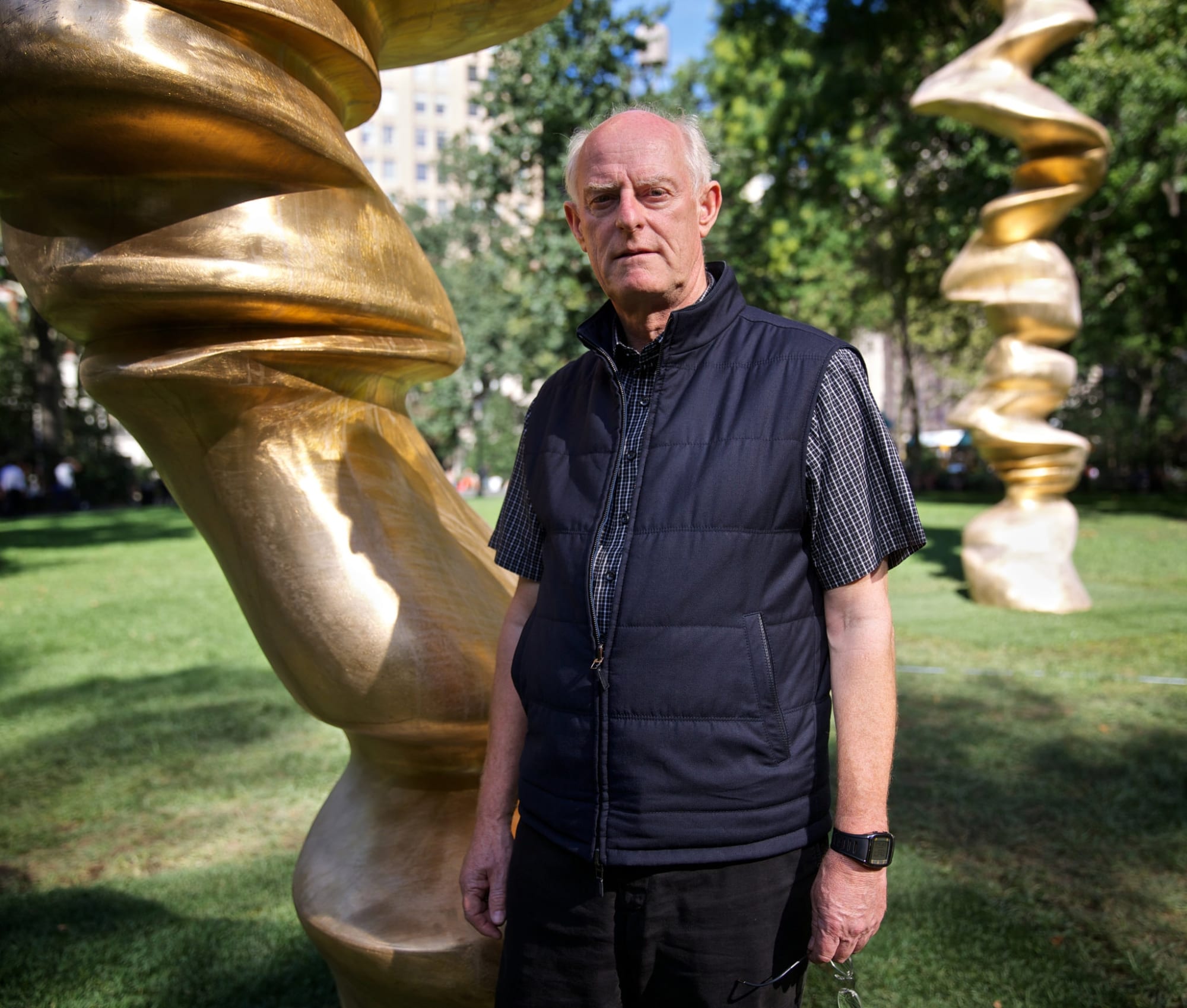
This Art Is Indeed Long (66 Feet). And Very Heavy (About 12 Tons).

Brooke Kamin Rapaport, the curator who shepherded an art world set piece in Madison Square Park on Friday, called what was being installed “the great levitating sculpture.”
The sculpture was “Points of View” and consisted of three extremely tall, extremely heavy pieces, but none of them rose from the ground and floated magically through the air. There were no David Blaine maneuvers, no seemingly impossible sleight of hand.
And that raised a question: How do big sculptures — in this case, irregularly shaped bronze towers just over 22 feet tall that weigh 8,000 to 10,000 pounds each — get there?
They cross the Atlantic on a container ship, go through customs at the Port Newark-Elizabeth Marine Terminal in New Jersey and are driven across the George Washington Bridge and the Macombs Dam Bridge in the middle of the night. Tractor-trailers take them to a lot in the Bronx used as a staging area by the company that would install them.
From there, they go over the Madison Avenue Bridge into Manhattan and down Fifth Avenue. And finally, with help from a 10-person crew and a 40-ton crane with a 148-foot-long boom, the pieces take the places in the park that they will occupy until Feb. 8 as part of the Madison Square Park Conservancy’s public art program, known as Mad. Sq. Art.
That was the short answer.
The long answer, according to Michael Narcisco, the president of Dun-Rite Specialized Carriers, the hoisting and rigging company hired by the conservancy to handle the installation, involved moving more than the sculptures. It involved moving a line of people “longer than any conga line I know,” he said.
It was the line of customers waiting at the Shake Shack in Madison Square Park. The customers were blocking the route for the sculptures, which were delivered early Wednesday morning.
He asked everyone in the line if they would simply move a few yards.
“Nobody gave up their place,” he said. “They all sidestepped.”
“Points of View,” and two other sculptures that were installed in Madison Square Park earlier in the week, were created by the artist Tony Cragg. He made casts of pieces he had done from 2008 to 2013 at a foundry in the German city of Wuppertal, where he lives. He visited Madison Square Park last spring to decide where to put them.
“They’re quite big sculptures, but everything in New York is big,” said Mr. Cragg, who arrived at the park at 8 a.m., six hours after his plane had landed and two hours after the Dun-Rite crew had begun setting up for the installation. “There’s a tendency to be monumental, but these are just big. It’s a question of scale.”
Several things happened as the crane lifted the second of the three towers. The restaurateur Danny Meyer walked by, cellphone clamped against his ear. Dog-walkers and nannies paused. Dogs strained on their leashes. Children dozed in their strollers. And Mr. Cragg said he was mostly pleased with the way the tower looked after its long trip from Europe.
“It needs some rain,” Mr. Cragg said. “It’s slightly buffed from the wrapping around it. It needs a patina. A few days in the New York air and some rain, and it will settle down.”
For the next couple of hours, he and Ms. Rapaport stood watching what she called “the choreography of the installation.” As with any important performance, there had been a dress rehearsal.
“We spent a whole Sunday in the yard figuring how to pick them up,” said Marek Kowalik, a project manager for Dun-Rite.
Mr. Narcisco said the idea was to become familiar with the work in a way that is different from just staring at it.
“So many times, with monumental sculptures, they lift awkwardly and the center of gravity is not known,” Mr. Narcisco said. “At the job site, there can be no conjecture. You have to know where your sling placements are. This is why homework has to be done. We’ve already done the installation, so to speak, in the yard.”
Or, as Mr. Kowalik put it, “It looks easy here, but we spent 12 hours on it on Sunday.”

“They’re quite big sculptures, but everything in New York is big,” said the sculptor, Tony Cragg. Image: Benjamin Norman for The New York Times